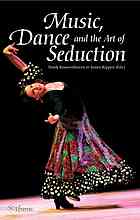Interview with filmmaker Beeban Kidron, plus exclusive clips from her new film. Sex, Death and the Gods explores the complex world of India’s devadasi, girls devoted to a goddess and then sold for sex at puberty | Lindsay Poulton and Joanna Moorhead, theguardian.com, 21 January 2011 >>
Documentary maker Beeban Kidron (4:49): “They [the devadasis themselves] know what an education means. And what an education means is a possible way out. Not necessarily a way out but a possibility that you could earn your money some other way. […] This is about economics. This is about poverty. This is about not having alternatives.” […]
Girl taken out of school at a young age by her mother (5:30 onwards): “It’s been two years. […] No money in our hands, so I don’t go [to school].”
Beeban Kidron (7:27): “One of the things that is fascinating but complicates the whole issue is that there is more than one form of being a devadasi. I think what is important is to know and to understand that the elite devadasi are actually the grandmothers of Indian national dance bharata natyam in the elite world of temple and court. These women were the lovers of princes and priests and other high caste men. [*] And it was a huge privilege and a sign of social mobility to be a devadasi. But there has obviously been a break in the tradition and it was made illegal in 1947 as the British left India. […] We have to be careful how we view things. And that was the journey for me. […] That system of dedicating young girls is abusive, is sex slavery, and so on. It’s paradoxical, you have to raise the age of consent, you have to work with the women, you have to help them educate their daughters, you have to help with the alternative.”
Some clarifications on caste-related issues by reputed scholars >>
Read a recent interview with Beeban Kidron in The New York Times, on protecting children online
The Baroness Fighting to Protect Children Online
By Natasha Singer, August 27, 2019
Beeban Kidron has successfully pushed stricter limits on how tech companies can target children online in Britain. […]
A member of the House of Lords, she had just flown in from London to attend an international meeting hosted by the social network. And now, in a hotel thronging with tech executives, she was recounting her plan to overhaul how their companies treat children. […] Read the full interview here >>
More (documentary) films by Director, Producer and writer Beeban Kidron on imdb.com >>
Learn more about the devadasis throughout (known) history in Music, Dance and the Art of Seduction

http://www.worldcat.org/oclc/826453329
Chapters by Joep Bor (pp. 233), “On the dancers or Devadasis: Jacob Haafner’s Account of the Eighteenth-Century Indian Temple Dancers” and Tiziana Leucci (pp. 261), “Between Seduction and Redemption – The European Perception of India’s Temple Dancers in Travel Accounts and Stage Productions from the Thirteenth to the Nineteenth Century”Information about the persons, items or topics
Research & Custom search engines
The Oxford Illustrated Companion to South Indian Classical Music
Learn & practice more
A brief introduction to Carnatic music (with music examples and interactive map)
Bhava and Rasa explained by V. Premalatha
Free “flow” exercises on this website
Introduction (values in the light of modernity)
Video | Keeping tala with hand gestures: Adi (8 beats) & Misra chapu (7 beats)
Why Carnatic Music Matters More Than Ever
Worldcat.org book and journal search (including Open Access)
